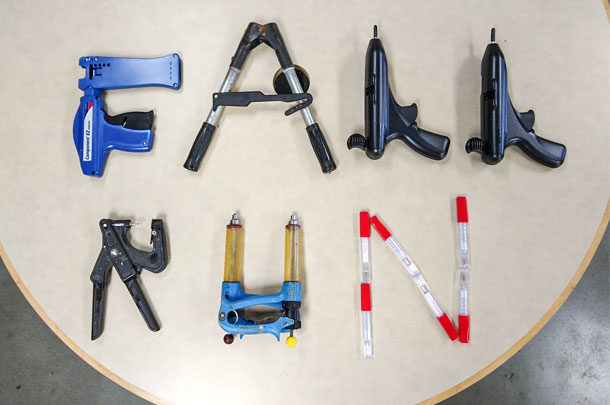A marathon begins in late August every year across cattle country. No, it’s not one celebrated with loud music and matching T-shirts, but instead it begins with the rumble of bawling calves and auction cries. This jaunt, of course, is the fall run of spring-born calves, ready to move from the ranch to their next destination.
As a veterinarian, I get the privilege of seeing all the aspects of the run in motion. And, I do mean privilege, because the complexity of the American beef system is a joy to watch unfold. From the tiny farms with a few cows to West River ranches, these calves are gathered, preconditioned and marketed. They congregate at auction rings then scatter once again to backgrounders and feeders across the fruited plain. And, at each location, as a vet I get to be a part of this journey.
Now, here in the Midwest, the joys of fall calf work have to compete with the needs of harvest. So, in October and November when the ground is dry, things are pretty manageable around the vet clinic. People who scheduled ahead get their calves worked at those set times in pleasant conditions.
The rough part comes the day after a rain. Since people can’t get in the field, they figure, “Why don’t we get these calves done instead?” So, the phone at the clinic rings off the hook with folks looking to work calves right away. And, when everyone calls looking to work calves that day, there’s usually not enough hours to squeeze them all in. So, the talk gets down to the coffee shop that we don’t have enough vets in the area and the government should do something to help with that. Then it dries off, the combines roll again and there’s openings in the schedule again to work calves.
As far as the work of the fall run is concerned, processing calves at the feedyard is one of my favorite jobs. Some people go to a spa; I’d rather stand by a good hydraulic chute and work calves. The repetition of doing the same thing to the same type of animal a few hundred times lets you relax the brain for a while. With a good crew to bring the cattle up and to process, the whole event flows like a ballet – albeit not one you could probably sell tickets for at Christmastime.
On the other hand, castrating is not one of my favorite jobs, especially in the fall. Bending over the chute several dozen times to tug on those big testicles is tough work and can be hard on a guy’s back. Word to the wise – if you’d like to keep your vet in practice longer, cut those calves right after they’re born. The calves and your vet’s back will feel better in the long run.
Between the two jobs lies the sale barn, where veterinarians must inspect calves, process some calves and preg the bigger heifers. Writing health papers takes a big chunk of time here, and since the cattle can’t move without the paper, I’ve spent my time writing fast enough to make smoke fly from the pen. Now that we have electronic options, it makes life easier, but the keys click away quickly like a room full of typewriters.
The fall run will eventually end, but unlike calving season, it simply messes with preg checking. By the time you get into February, you get to thinking that it’s been a while since you worked calves. But, come next August, those calls will start to filter in again, ushering in another marathon of cattle.









